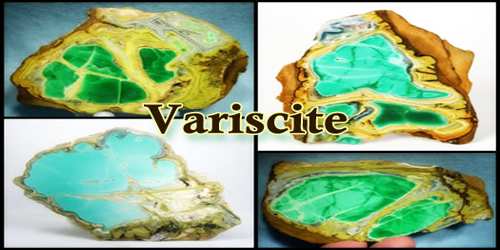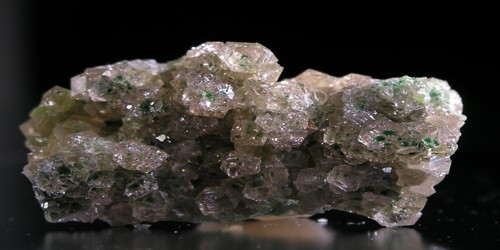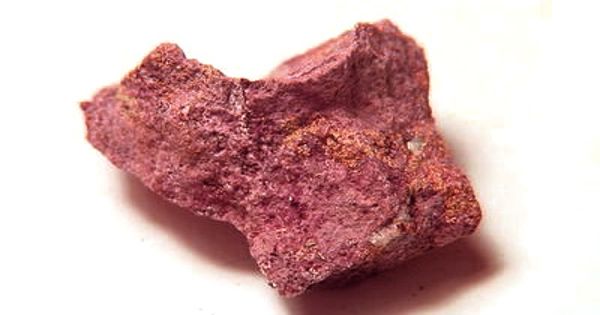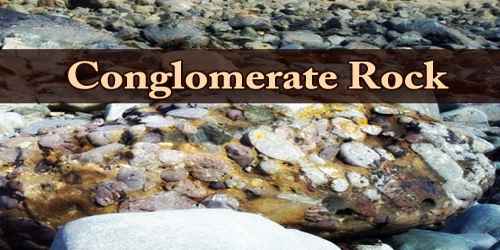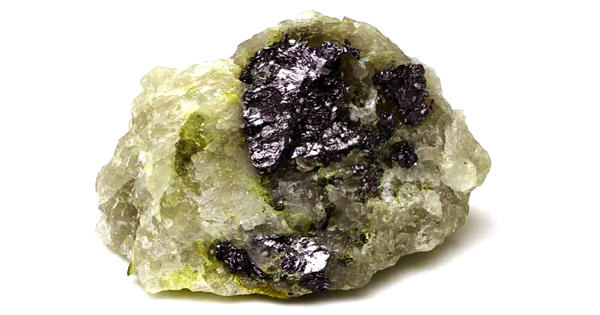Definition –
“Variscite” is a rare hydrated aluminum phosphate mineral (AlPO4·2H2O), which is valued as a semiprecious gemstone and an ornamental material. It is a relatively rare phosphate mineral. It is sometimes confused with turquoise; however, variscite is usually greener in color. The green color results from the presence of small amounts of chromium.
History of Variscite: ‘Variscite’ is named after “Variscia,” the historical name of the Vogtland district in Saxony, Germany, where the gemstone was originally found in 1837. A hydrated aluminum phosphate mineral, variscite is rare and has been previously mistaken for turquoise at times. Variscite tends to not only be greener than turquoise, but also doesn’t contain copper.
Variscite specimens of exceptional color and appearance are often cut into gemstones, used to make small sculptures, or used as an ornamental stone in small projects.
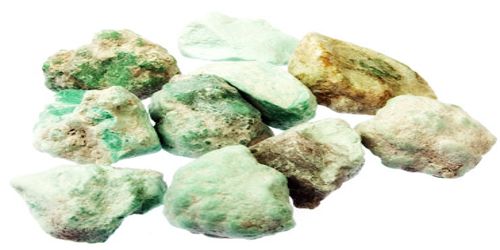
Occurrence and Properties of Variscite –
Variscite is a secondary mineral formed by direct deposition from phosphate-bearing water that has reacted with aluminium-rich rocks in a near-surface environment. It occurs as fine-grained masses in nodules, cavity fillings, and crusts. Variscite often contains white veins of the calcium aluminium phosphate mineral crandallite. It was first described in 1837 and named for the locality of Variscia, the historical name of the Vogtland, in Germany. At one time, variscite was called Utahlite. At times, materials which may be turquoise or may be variscite have been marketed as “variquoise”. Appreciation of the color ranges typically found in variscite have made it a popular gem in recent years.
In the United States, variscite is found in Nevada, Utah, and Wyoming. It is also found in Australia, Brazil, Germany, Poland, and Spain. Variscite is often found in the same geographic areas as turquoise, and this can result in variscite being incorrectly identified as turquoise.
Variscite is cut en cabochon (with a round, convex, polished surface) for brooches, earrings, and beads and is frequently substituted for turquoise. It also is carved into bowls or other decorative objects. Because of its porosity, it tends to absorb grease and oil, which discolour it.
Variscite calms and soothes the mind, therefore being a good stone for meditation. It helps people to think clearly and increases perception. It encourages self-expression and communication of ideas. Variscite provides hope and courage, being extremely helpful in supporting invalids and their caregivers to continue to deal with the disease that illness can create. It stimulates the heart chakra, bringing unconditional love and understanding to all situations.
Variscite also helps with past-life exploration and memory. It works on an astral and etheric level for healing via the Central Nervous System and at DNA level. According to metaphysical beliefs, variscite is believed to enhance joy felt by the wearer. Carry variscite to induce peace and harmony within ourself. Though variscite is not an official birthstone, this gemstone is associated with the Zodiac signs of Gemini, Scorpio and Taurus.
Typically, variscite is opaque with a vitreous to waxy luster, though some rare instances are slightly translucent near the edges. The green color of variscite is created by the chromium content found in the mineral. Other colors of variscite include light blue-green, purple, orange and very rarely red. The higher the iron impurities in variscite, the more brown the color will become. Most variscite also displays black or white veining resulting from how the mineral is formed. Variscite frequently occurs as a secondary mineral in brecciated sandstone deposits and as rounded, coarse aggregate masses in cavities. Variscite deposits are found all over the world: USA, Australia, Germany, France, Poland, Russia, Spain, Sweden and Brazil. Two varieties of variscite from the United States are the most desirable: the emerald-green variscite comes from Utah (sometimes called utahlite) and the highly veined variscite is found in Nevada.
Uses and Benefits of Variscite –
Variscite is sometimes used as a semi-precious stone, and is popular for carvings and ornamental use due to its beautiful and intense green color, and is commonly used in silversmithing in place of turquoise. Variscite is more rare and less common than turquoise, but because it is not as commonly available as turquoise or as well known to the general public, raw variscite tends to be less expensive than turquoise.
Variscite has a Mohs hardness of only 3.5 to 5, and because of that it is very easily abraded if used in a ring or a bracelet. It is best used as a pendant, in earrings, in pins, or in other items that will not be subjected to impact or abrasion. Variscite can also be scratched or damaged if it is stored or carried in ways that abrasion can occur.
Variscite is a fragile gemstone with a splintery fracture. To clean variscite, do not use any harsh chemicals or cleaners. The best method for cleaning variscite is to use a soft cloth and mild soapy water. Rinse variscite well to remove any soapy residue. Since variscite is hydrous, avoid ultrasonic cleaners and heat steamers. In fact, any prolonged exposure to heat can cause a permanent color shifts in variscite, so don’t store this gemstone in the sun. Store variscite gemstones separately from harder gemstones and materials to avoid scratching the surface. Try wrapping variscite in a soft cloth or on a velveteen jewelry pad inside a tray.
Information Sources:
